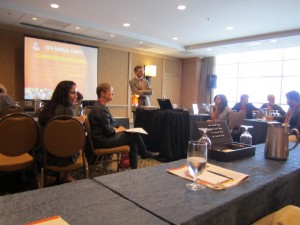
Ms. Sally Gaskill
What’s the State of Career Development for Musicians?
Posted by Sep 15, 2011

Ms. Sally Gaskill
In his post, Ron Jones takes on the topic of career development for art and design students. I thought I would check in with Angela Myles Beeching, author of Beyond Talent: Creating a Successful Career in Music, for her perspective on the performing arts. As she says, “It takes more than talent to succeed in music.”
Beeching, who has a DMA in cello performance, is the former director of the Career Services Center at New England Conservatory. She currently directs the Center for Music Entrepreneurship at Manhattan School of Music and maintains a thriving private consulting practice.
Q (Sally): I once heard the dean of a prominent school of music say that typical undergraduate music students do not start thinking about what they might do after graduation until the spring semester of their junior year. Then they panic. What’s your response to that scenario?
A (Angela): Part of it is a developmental process: undergrads are so busy fulfilling their degree requirements and figuring out how to become adults, that the reality of graduation does not start to get real until junior year. However, students at every stage have entrepreneurial project ideas. So, the earlier you can engage students in developing leadership and entrepreneurial skills, the easier it is for them to think about longer-term career goals and the action steps needed to fulfill their dreams.
Read More


















































